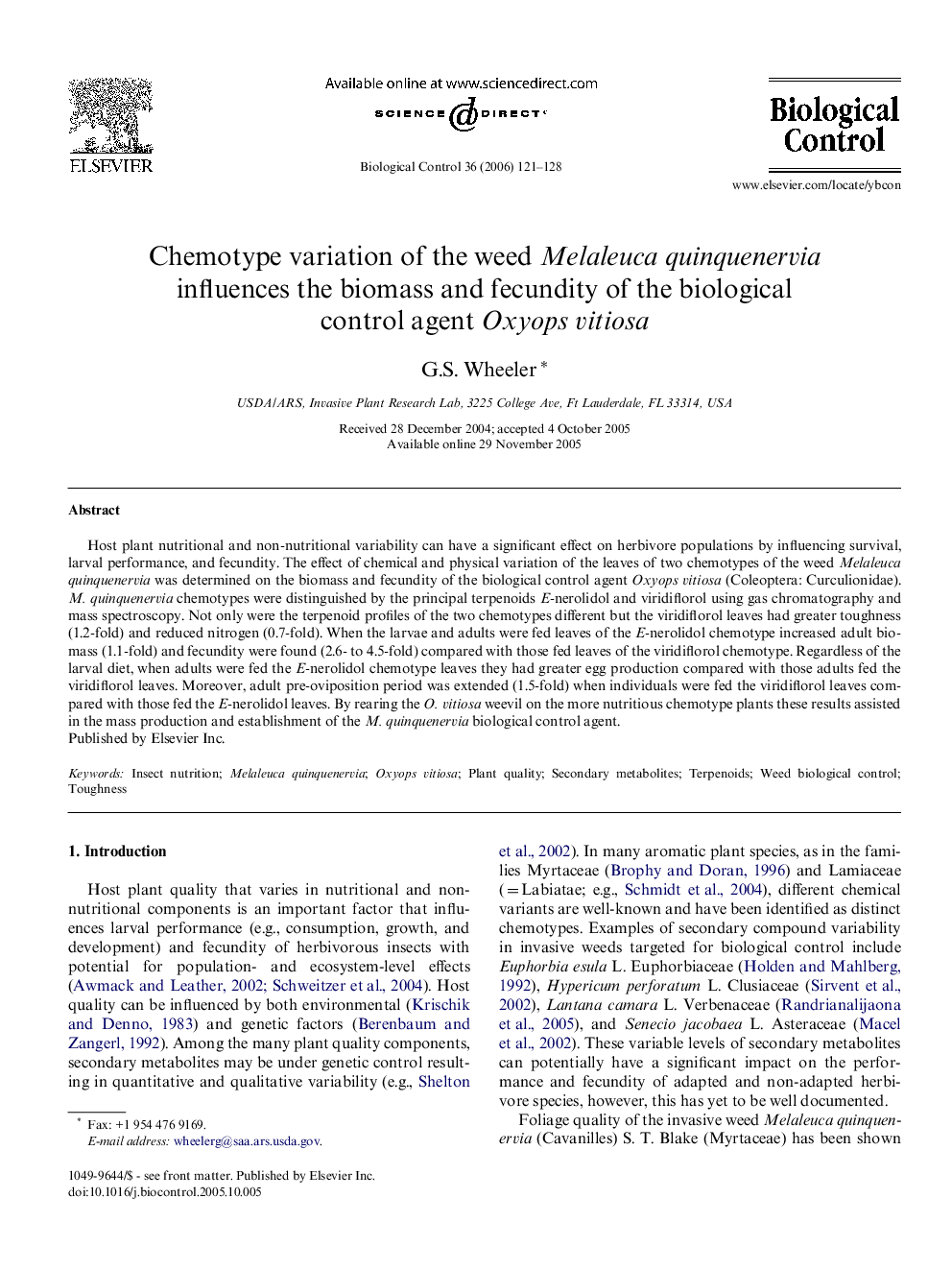| کد مقاله | کد نشریه | سال انتشار | مقاله انگلیسی | نسخه تمام متن |
|---|---|---|---|---|
| 4505411 | 1321143 | 2006 | 8 صفحه PDF | دانلود رایگان |

Host plant nutritional and non-nutritional variability can have a significant effect on herbivore populations by influencing survival, larval performance, and fecundity. The effect of chemical and physical variation of the leaves of two chemotypes of the weed Melaleuca quinquenervia was determined on the biomass and fecundity of the biological control agent Oxyops vitiosa (Coleoptera: Curculionidae). M. quinquenervia chemotypes were distinguished by the principal terpenoids E-nerolidol and viridiflorol using gas chromatography and mass spectroscopy. Not only were the terpenoid profiles of the two chemotypes different but the viridiflorol leaves had greater toughness (1.2-fold) and reduced nitrogen (0.7-fold). When the larvae and adults were fed leaves of the E-nerolidol chemotype increased adult biomass (1.1-fold) and fecundity were found (2.6- to 4.5-fold) compared with those fed leaves of the viridiflorol chemotype. Regardless of the larval diet, when adults were fed the E-nerolidol chemotype leaves they had greater egg production compared with those adults fed the viridiflorol leaves. Moreover, adult pre-oviposition period was extended (1.5-fold) when individuals were fed the viridiflorol leaves compared with those fed the E-nerolidol leaves. By rearing the O. vitiosa weevil on the more nutritious chemotype plants these results assisted in the mass production and establishment of the M. quinquenervia biological control agent.
Journal: Biological Control - Volume 36, Issue 2, February 2006, Pages 121–128